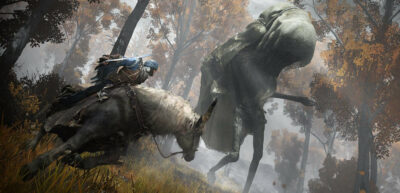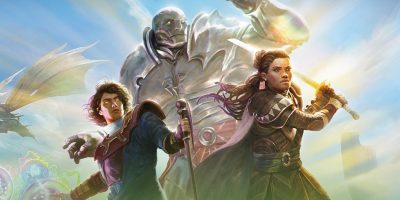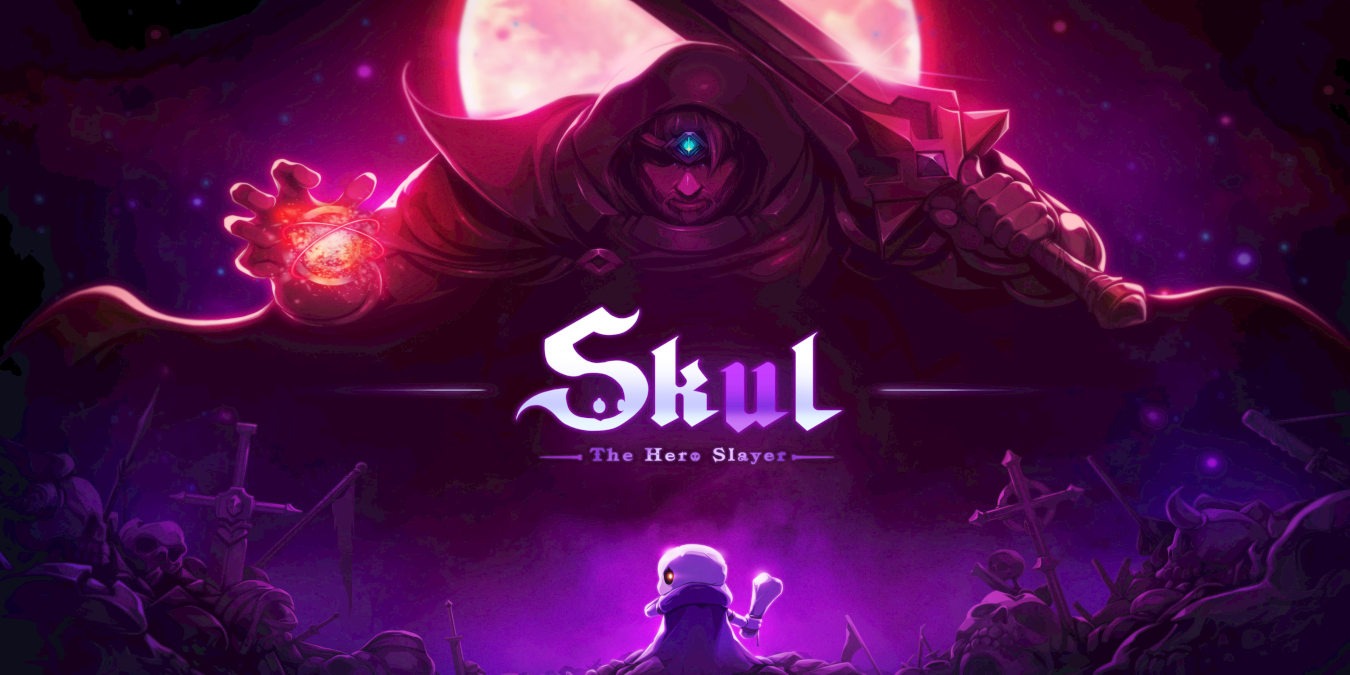
Skul the Hero Slayer is out on Xbox Game Pass, bringing its unique take on the roguelite genre to a new audience.
Skul stars a small skeleton named Skul on a journey for revenge. Our hero used to work for the Demon King when the Kingdom of Carleon, a stand-in for the stereotypical ‘good’ kingdom, captures his boss. Now, our little skeleton is the only hope to set the world right and bring justice to the kingdom of heroes who did him wrong.
Let’s take a look at how Skul: The Hero Slayer brings plenty of life (and a few deaths) to the roguelite genre.
Barebones Combat
Skul has the all fundamentals of a modern-day action roguelite – there’s a basic attack chain, dodge, jump, and randomized artifacts. This is where Skul hits a small problem since most fights can be settled by mashing basic attacks into crowds of enemies. Later levels will force more movement out of the player but the combat itself still remains on the simplistic side. In all fairness, there’s a thrill in those later levels from just weaving in and out of crowds and picking off key enemies where possible.
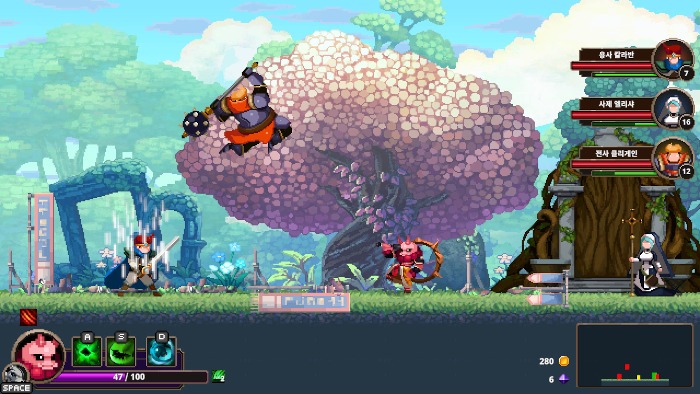
Similar to its contemporaries in Hades and Dead Cells, most of Skul’s enemies have obvious tells for when they will attack and how. This is conveyed through Skul’s gorgeous pixel art and wonderful sound design, so players have a fair and obvious warning for when to dodge.
The enemies themselves each bring a unique pattern and, combined with Skul’s bright aesthetic, gives players an understanding of a room’s challenges with just a glance. Key enemies that the player must take out will usually stick out from the crowd thanks to their art. Mages and mad alchemists are brightly colored, demonic portals have light effects around them, and post-death effects have an exclamation point over the enemy’s heads.
This results in a combat system where the controls and mechanics can feel robust in their simplicity. Perfectly timed dashes and jumps feel amazing to pull off. Yet when it comes to combat, the only options are basic attacks. It’s a formula that old-school platformers made their name with, but it feels shallow in a modern game. What pumps life back into Skul’s combat system, and the reason why it’s such an addictive game, is Skul’s ability to transform into other skeletons.
A Beating Heart For A Skeleton
At the heart of Skul are the many monsters that your skeleton can transform into. Skul can transform by swapping his head with the skulls of the monsters he wants to become.

Each skull brings a new combination of abilities that change from run to run. A werewolf skull will have players zipping through crowds of enemies with its multiple dashes and blindingly fast speed. Yet, in another run, that same werewolf skull will instead turn players into a tank that heals itself whenever it kills enemies. This randomization gives each skull a chance to fit into your build.
As the run progresses, these skulls can evolve in a way that’s similar to pokemon – gaining new abilities, a new form, and a plethora of stat increases. With enough persistence, that simple werewolf skull will evolve into a super-powered ghost-wolf that rockets through levels and gains stronger critical attacks the further it travels. This rewards players for finding their favorite builds and sticking with it through the run – a feat many roguelites struggle with.
On top of that, some skulls are just fun to use. The Rock Star skull has players destroying enemies with sick riffs, and when the music meter fills up from all of your guitar solos that destroyed enemies, Skul summons an enti
By making its skulls so dynamic, unique, and randomized, Southpaw Games highlights how the roguelite genre can be so beautiful. When players are given randomized yet colorful tools like skulls to express themselves with, barebones combat springs to life in a vibrant dance of gorgeous pixel art and novel gameplay. The creativity in these skulls offers a fresh take on the simplistic charm of older platform games like Megaman while still creating an addictive roguelite experience.
The levels of creativity in this game hit new highs with skulls that pay homage to other games. The Mummy skull recreates Metal Slug’s gameplay, including the weapon drops and even Metal Slug’s grenade system. The Prisoner’s skull turns the game into an homage to Dead Cells, with Skul defeating enemies to collect cells and powering-up through scrolls.
Ghost in the Skull
If the skull system is the heart of this game, then the story and theme are its soul. Skul: The Hero Slayer has players help the traditionally evil faction of undead, demons, and other creepy crawlies overthrow the humans. While Southpaw Games could have let the story play out like that, they instead created a far more gripping tale where Skul discovers the many lengths the humans had gone through in order to secure their victory.
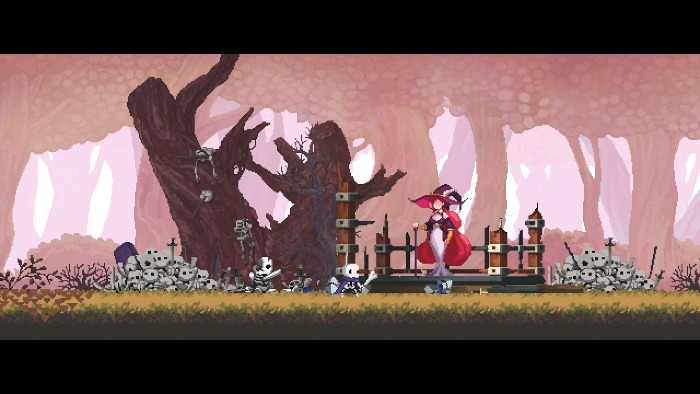
In doing so, Skul flips the idea of what makes a good guy in a fantasy setting. The humans kidnapped and experimented on innocent bystanders, emotionally manipulated their heroes, and murdered humans and monsters who they couldn’t turn into useful subjects. It’s a story that’s both hopeful and heart-wrenching.
Skul’s Future
Recent patches have added new skulls, abilities, relics, and updated older skulls to be far more fun. Skulls like the Ent skull had slow attacks and little else going for them. With the newest update, the Ent Skull can now plant seeds and gains a bonus for standing in the plants it creates, so while it’s still slow, it now has more personality and more damage. Southpaw Games has stated that it hopes to bring new life to old skulls in a similar fashion, and so far, they’ve done a remarkable job with their reworks.
While combat can have its moments of being too simple, these moments are becoming more rare as Skul’s development team releases more patches. Each new and reworked skull has more engaging gameplay mechanics, like the Champion Skull which builds meter as it attacks and can use that meter to enter a super mode where it will deal more damage and attack faster.
Skul’s developers are also extremely transparent with their design philosophy. The development team delivers fantastic write-ups of what they intended, what exists in the game, and what they changed to match their vision.
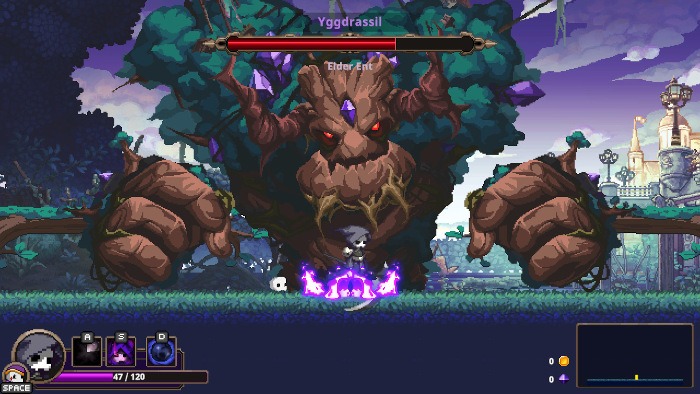
As a result of these efforts, each run of Skul continues to offer new surprises for long-time fans. New rooms with fresh challenges have been added and the new items/skull reworks have breathed new life into old skulls.
All of these points show a bright future for this charming roguelite. Skul: The Hero Slayer is an exhilarating game to play that’s easily worth more than its humble price-tag.
Dying for more? Check out the Best Roguelite Games RANKED, or how Dreamscaper is a Beautiful Roguelike About Depression.






